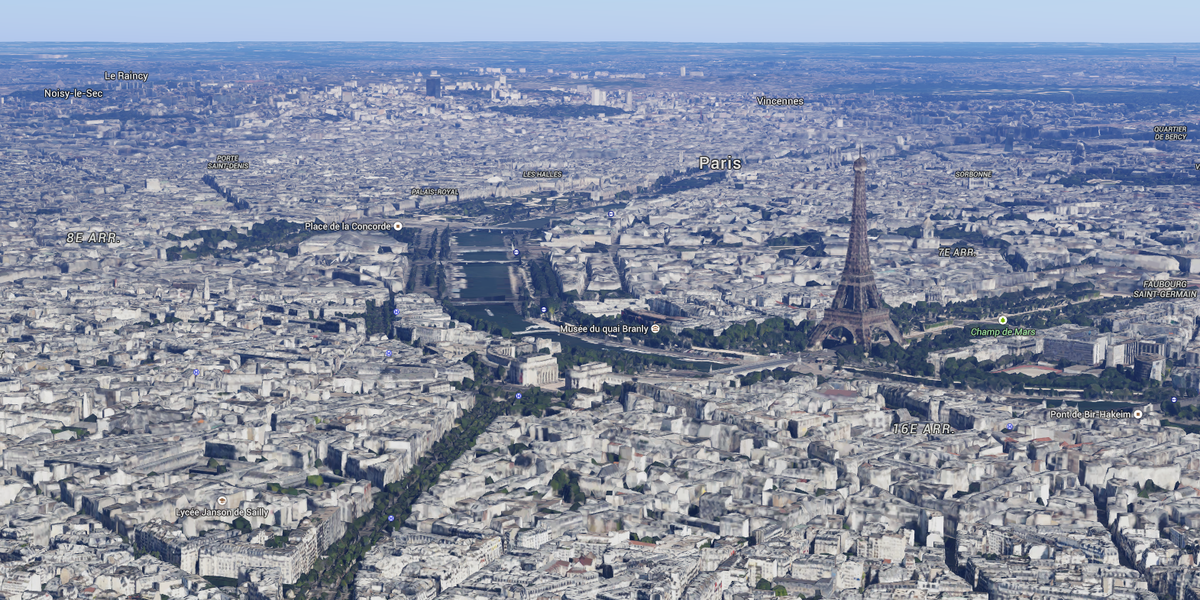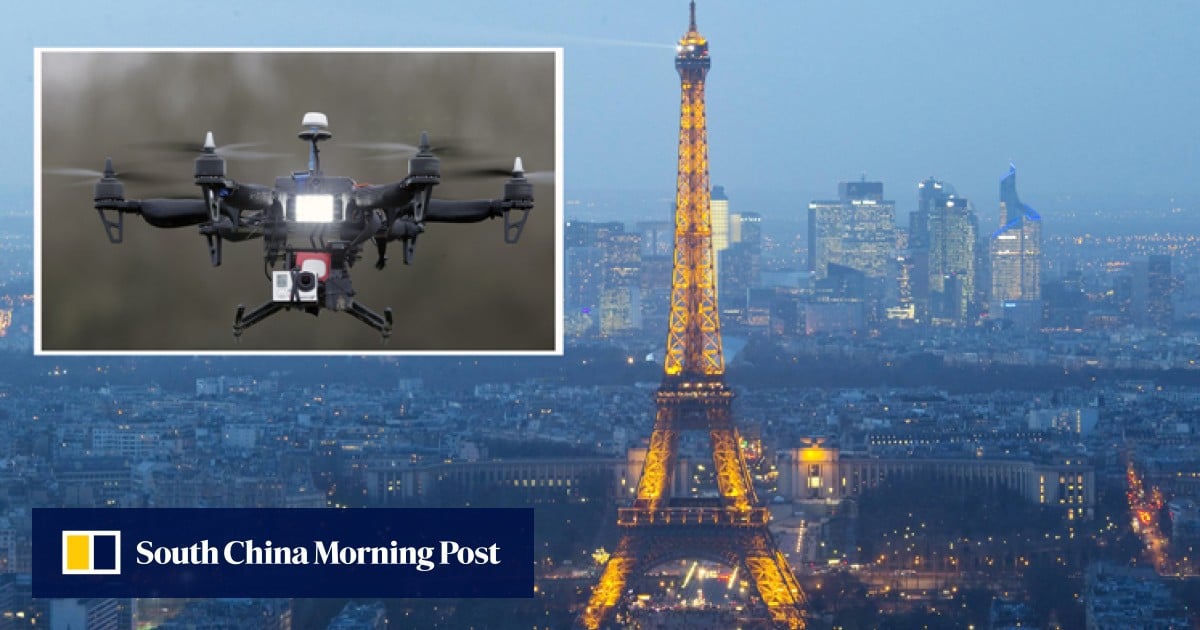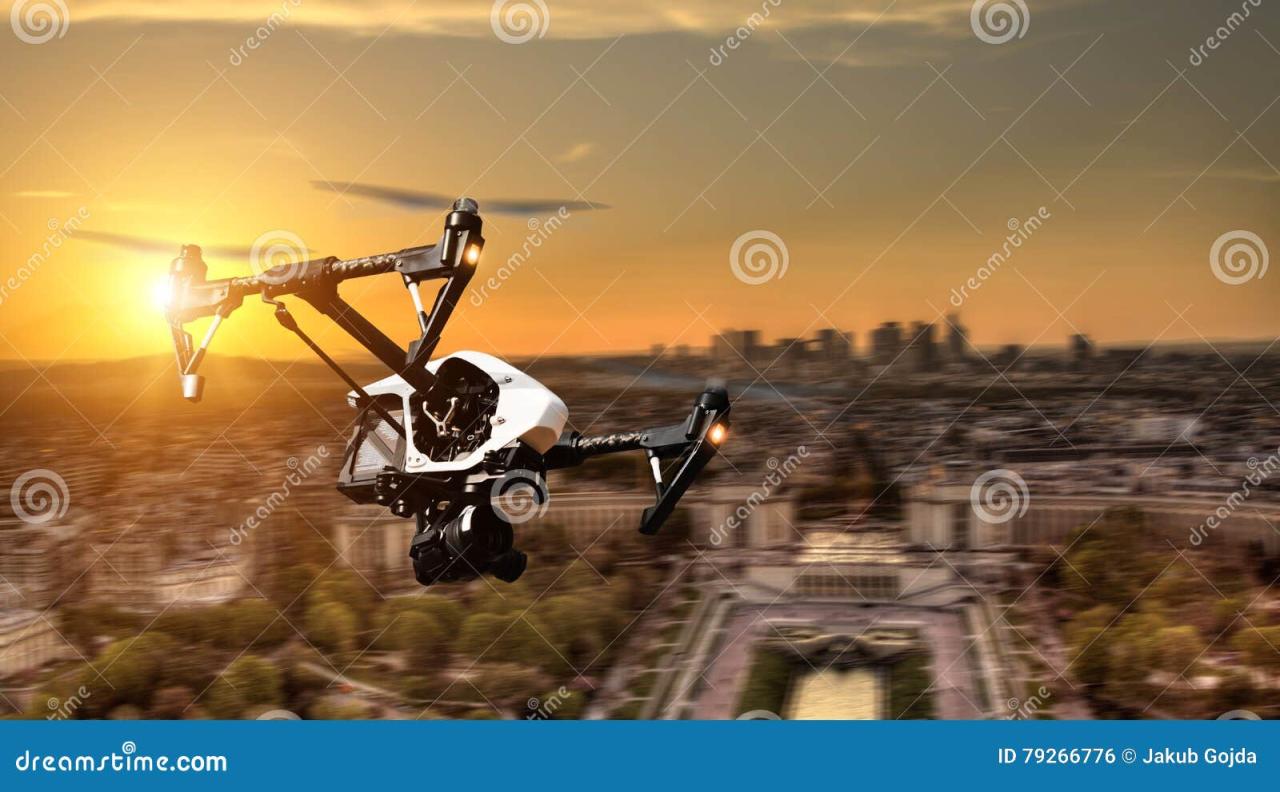Drone in Paris: Imagine soaring above the Eiffel Tower, the Louvre, and the Seine, capturing breathtaking aerial footage. But operating a drone in the City of Lights isn’t as simple as pointing and shooting. This guide navigates the complex world of Parisian drone regulations, explores popular uses, addresses safety concerns, and looks to the future of this technology in one of the world’s most iconic cities.
We’ll uncover the legal landscape, examine successful drone implementations, and delve into the public’s perception of these increasingly ubiquitous flying machines.
Thinking about drone photography in Paris? The city’s stunning architecture offers incredible shots. If you need a break from all that aerial planning, though, try flexing your word skills with a fun challenge: check out this list of 11 letter words starting with ai to unwind. Then, get back to capturing those Parisian masterpieces from above – your drone’s ready!
From the intricate legal framework governing drone flights to the exciting possibilities they offer for tourism, infrastructure monitoring, and even delivery services, we’ll explore the multifaceted role of drones in Paris. We’ll also address crucial safety and security issues, considering the potential risks and mitigation strategies necessary in such a densely populated urban environment. Finally, we’ll examine how technological advancements are shaping the future of drone technology in Paris and its impact on the city’s landscape.
Drone Regulations in Paris
Navigating the airspace above Paris with a drone requires a thorough understanding of the city’s specific regulations. These rules, while aiming to ensure safety and security, can be complex for both recreational and professional drone users. This section will clarify the legal framework, permitting processes, and penalties associated with drone operation in Paris.
Current Legal Framework for Drone Operation in Paris
The legal framework governing drone use in Paris is primarily based on French national regulations, supplemented by local ordinances. These regulations cover aspects such as drone registration, pilot certification, flight restrictions, and operational limitations. Generally, drones are categorized based on their weight and intended use, with stricter rules applying to heavier and commercially operated drones.
Permits and Licenses for Drone Activities
Depending on the intended use, obtaining specific permits or licenses might be necessary. For recreational purposes, registration might be sufficient. However, commercial activities, such as aerial photography for tourism or infrastructure inspections, usually require more extensive authorization from the Direction Générale de l’Aviation Civile (DGAC), the French civil aviation authority. Deliveries via drones also necessitate specific permits and adherence to strict safety protocols.
Comparison with Other European Cities
Parisian drone regulations are comparable to those of other major European cities, emphasizing safety and responsible drone use. While specific requirements may vary, common themes include registration, pilot certification, and airspace restrictions near airports and sensitive areas. Cities like London, Amsterdam, and Berlin also have strict regulations to manage drone operations within their urban environments. The differences mostly lie in the specific enforcement mechanisms and the level of detail in their respective regulations.
Penalties for Violating Drone Regulations
Violating drone regulations in Paris can result in significant penalties, including hefty fines and potential legal action. The severity of the penalty depends on the nature and gravity of the violation. Unauthorized flights near airports or other sensitive areas, for example, can attract substantially higher penalties than minor infringements.
Thinking about drones in Paris? Their use for photography and delivery is growing, but the technology’s military applications are also a concern. Check out this article on the recent drone attack russia to see how drone technology is being used in conflict. Understanding these global uses helps us appreciate the potential benefits and risks of drones, even in a seemingly peaceful city like Paris.
Popular Drone Use Cases in Paris

Drones are finding increasing applications in Paris, impacting various sectors. From enhancing tourism experiences to improving infrastructure management, their versatility is transforming the city’s operations. This section explores the most common applications and their economic impact.
Thinking about flying your drone in Paris? Awesome city, but reliable connectivity is key for smooth operation and safe drone flights. You’ll want to check your options beforehand, maybe even consider a plan from a provider like bell mts if you’re planning a longer trip, ensuring you’ve got the right data plan to support your drone’s needs in a foreign country.
Then you can fully enjoy those stunning Parisian aerial shots!
Common Drone Applications in Paris
The most common applications include: aerial photography and videography for tourism and marketing; infrastructure inspection for bridges, buildings, and power lines; security and surveillance for public events and monitoring; and delivery services for small packages and goods. These applications showcase the diverse capabilities of drones in a bustling urban environment.
Successful Drone Implementations
Several successful drone implementations exist in Paris. For instance, the city has utilized drones for inspecting the structural integrity of its historic bridges, minimizing disruption and enhancing safety. Similarly, drones have aided in monitoring large public gatherings, improving security measures without significant human resource deployment. Tourism companies utilize drones to capture stunning aerial footage of Parisian landmarks, offering unique perspectives to visitors.
Economic Impact of Drone Technology
The economic impact of drone technology in Paris is multifaceted. It creates new job opportunities in drone operation, maintenance, and related services. It also improves efficiency in various sectors, leading to cost savings and increased productivity. The tourism sector, in particular, benefits significantly from the unique perspectives offered by drone photography.
Case Studies: Benefits and Challenges
A case study could focus on the use of drones for delivering medical supplies in emergencies. This highlights the potential benefits in terms of speed and efficiency but also presents challenges like navigating the dense urban environment and ensuring reliable battery life. Another case study could focus on the use of drones for environmental monitoring, such as assessing air quality or tracking pollution levels.
This would illustrate the potential for drones to contribute to a more sustainable city, while highlighting challenges such as data processing and regulatory compliance.
Safety and Security Concerns Related to Drones in Paris
Operating drones in a densely populated city like Paris presents several safety and security concerns. Addressing these concerns proactively is crucial for ensuring responsible drone use and preventing accidents or misuse. This section identifies potential risks and Artikels mitigation strategies.
Potential Risks Associated with Drone Operation
Potential risks include collisions with buildings, aircraft, or other objects; privacy violations through unauthorized aerial surveillance; disruptions to air traffic; and potential misuse for malicious purposes, such as smuggling or attacks. The density of buildings and the high volume of air traffic in Paris significantly increase these risks.
Safety Protocol for Responsible Drone Operation
A comprehensive safety protocol should include: thorough pre-flight checks; adherence to all applicable regulations and airspace restrictions; maintaining visual line of sight; avoiding flights over crowds or sensitive areas; using appropriate safety features; and having a backup plan in case of malfunctions. Pilot training and awareness are also crucial components of this protocol.
Measures to Mitigate Risks
Measures to mitigate these risks include establishing no-fly zones near airports and sensitive locations; deploying drone detection systems to identify unauthorized flights; implementing robust registration and licensing systems; and raising public awareness about safe and responsible drone use. Clear communication and collaboration between drone operators, authorities, and the public are vital for successful risk mitigation.
Safety Concerns Table
| Risk | Likelihood | Impact | Mitigation Strategy |
|---|---|---|---|
| Collision with buildings/aircraft | High (in densely populated areas) | High (potential injury/damage) | No-fly zones, pre-flight checks, visual line of sight |
| Privacy violation | Medium | Medium (public concern, legal issues) | Clear regulations on data collection, public awareness campaigns |
| Malicious use | Low | High (security threat) | Drone detection systems, enhanced security protocols |
| Air traffic disruption | Low | High (safety hazard) | Airspace restrictions, communication with air traffic control |
Technological Advancements and Future of Drones in Paris
Emerging drone technologies are poised to significantly impact the future of drone use in Paris. These advancements offer opportunities to address urban challenges and enhance various aspects of city life. This section explores these advancements and their potential impact.
Emerging Drone Technologies
Autonomous flight capabilities are rapidly improving, enabling drones to navigate complex urban environments without constant human intervention. Advanced sensors, such as high-resolution cameras and LiDAR, provide more detailed data for applications like infrastructure inspection and environmental monitoring. Improved battery technology extends flight times, allowing for more extensive operations.
Drones Addressing Urban Challenges
Drones can contribute to addressing traffic management challenges by providing real-time traffic data and assisting in optimizing traffic flow. They can also play a vital role in environmental monitoring by collecting data on air and water quality, helping to identify pollution sources and track environmental changes. In the realm of emergency response, drones can deliver essential supplies to hard-to-reach areas.
Projected Development Timeline
Over the next decade, we can expect to see increased integration of autonomous drones in various sectors in Paris. Improved battery technology will extend flight durations, allowing for longer missions. Regulations will likely evolve to accommodate these advancements, striking a balance between innovation and safety. The use of AI in drone operations will become more prevalent, leading to greater efficiency and automation.
Influence of Battery Technology, Drone in paris

Advancements in battery technology are crucial for expanding the operational capabilities of drones. Longer flight times will allow for more extensive inspections, surveillance, and delivery operations. This will reduce the frequency of battery changes, increasing efficiency and reducing operational costs. The development of lighter and more powerful batteries will further enhance drone performance and capabilities.
Public Perception and Acceptance of Drones in Paris
Public perception of drones plays a significant role in their successful integration into urban environments. Understanding public attitudes and addressing concerns is vital for promoting safe and responsible drone use. This section explores public perception and strategies for fostering acceptance.
General Public Attitude Towards Drones
Public opinion towards drones in Paris is likely a mix of excitement about the technological advancements and concerns about privacy and safety. While many recognize the potential benefits, anxieties about potential misuse or surveillance remain. Educational campaigns aimed at dispelling misconceptions and promoting responsible use are crucial.
Comparison with Other Major Cities

Public perception of drones varies across major cities. While some cities have embraced drone technology more readily, others exhibit more skepticism. Factors such as the level of public awareness, regulatory frameworks, and the prevalence of successful drone applications influence public attitudes. Comparative studies can help identify effective strategies for promoting public acceptance.
Public Awareness Campaigns
Effective public awareness campaigns can educate the public about drone regulations, safety protocols, and the potential benefits of drone technology. These campaigns should use clear and accessible language, address common concerns, and promote responsible drone use. Collaboration between government agencies, drone operators, and community groups can enhance the impact of these campaigns.
Addressing Public Concerns
Addressing public concerns about privacy and security requires transparent communication, clear regulations, and robust enforcement mechanisms. Data privacy regulations must be strictly enforced, and public awareness campaigns should emphasize the measures taken to protect privacy. Open dialogue and community engagement can help build trust and foster acceptance of drone technology.
Iconic Parisian Landmarks and Drone Photography
Capturing aerial footage of Paris’s iconic landmarks presents both challenges and opportunities for drone photographers. This section explores the unique perspectives offered by drones, ideal locations, and the impact of lighting and weather.
Challenges and Opportunities of Aerial Footage
The challenges include navigating complex airspace restrictions near landmarks, obtaining necessary permits, and ensuring safe and responsible operation in crowded areas. The opportunities lie in capturing breathtaking aerial perspectives of iconic landmarks, showcasing their beauty and grandeur from unique angles, creating stunning visual content for tourism and marketing.
Visual Appeal of Paris from a Drone’s Perspective
From a drone’s perspective, Paris offers a mesmerizing tapestry of architectural wonders and urban landscapes. The Eiffel Tower, viewed from above, reveals its intricate structure and majestic presence. The Louvre Museum, with its expansive courtyards and surrounding gardens, displays a different level of grandeur. The Seine River, winding its way through the city, showcases the beauty of the bridges and surrounding buildings.
Ideal Locations for Drone Photography
- The Eiffel Tower (with necessary permits)
- The Louvre Museum (with necessary permits and outside restricted areas)
- The Champs-Élysées
- The Sacré-Cœur Basilica (with necessary permits and outside restricted areas)
- The Seine River (at designated locations with minimal air traffic)
Impact of Lighting and Weather Conditions
Lighting conditions significantly impact the quality of drone photography. The golden hour, just after sunrise or before sunset, offers warm, soft light that enhances the beauty of Parisian landmarks. Overcast days provide diffused light, minimizing harsh shadows. Adverse weather conditions, such as rain or strong winds, can severely impact flight safety and image quality, necessitating postponement of flights.
Closing Summary
Drones are transforming how we interact with and experience Paris. From breathtaking aerial photography to innovative solutions for urban challenges, their potential is immense. However, responsible and regulated use is crucial to ensure both safety and the preservation of this historic city. By understanding the regulations, acknowledging the risks, and embracing the technological advancements, we can harness the power of drones to enhance, not endanger, the beauty and functionality of Paris for years to come.
The future of drones in Paris is bright, but it hinges on a balanced approach that prioritizes safety, responsible use, and public acceptance.
Question Bank: Drone In Paris
What types of drones are allowed in Paris?
Regulations vary depending on drone size, weight, and intended use. Check the official regulations for specific details. Generally, smaller drones for recreational use are subject to less stringent rules than larger commercial drones.
Where are the no-fly zones in Paris?
No-fly zones are constantly updated. Check the official French DGAC website for the most up-to-date information. Generally, areas around major landmarks, airports, and government buildings are restricted.
Do I need insurance to fly a drone in Paris?
Insurance is strongly recommended, even for recreational use. The specific requirements may depend on your drone’s size and intended use. Check with your insurance provider.
How can I obtain permission to fly a drone commercially in Paris?
Commercial drone operations require specific permits and licenses from the relevant authorities. The process involves demonstrating competence and adherence to safety regulations. Consult the DGAC website for detailed information.
